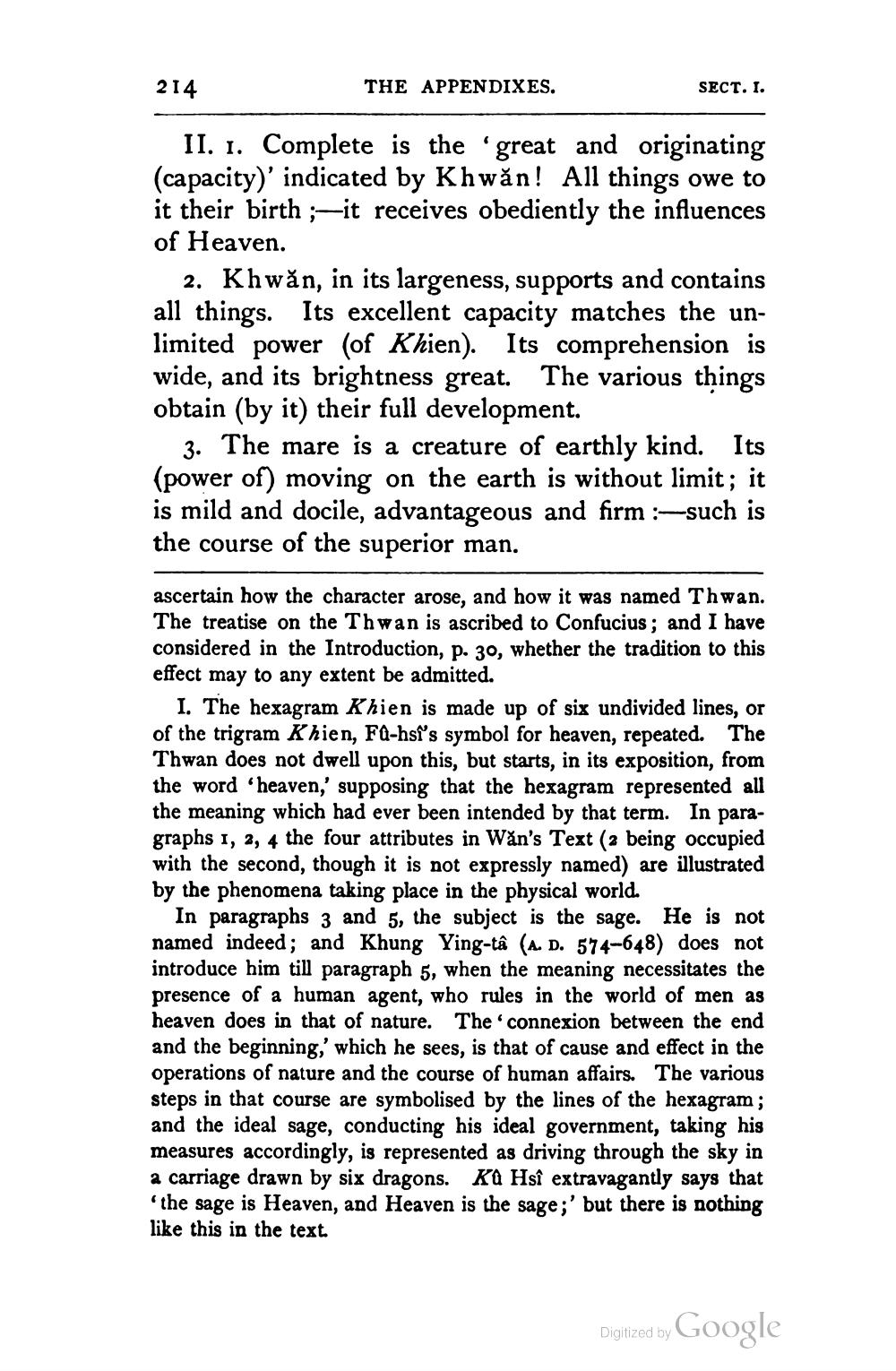________________
214
THE APPENDIXES.
SECT. I.
II. 1. Complete is the great and originating (capacity)' indicated by Khwăn! All things owe to it their birth ;-it receives obediently the influences of Heaven.
2. Khwăn, in its largeness, supports and contains all things. Its excellent capacity matches the unlimited power (of Khien). Its comprehension is wide, and its brightness great. The various things obtain (by it) their full development.
3. The mare is a creature of earthly kind. Its (power of) moving on the earth is without limit; it is mild and docile, advantageous and firm :-such is the course of the superior man.
ascertain how the character arose, and how it was named Thwan. The treatise on the Thwan is ascribed to Confucius; and I have considered in the Introduction, p. 30, whether the tradition to this effect may to any extent be admitted.
I. The hexagram Khien is made up of six undivided lines, or of the trigram Khien, Fa-hsi's symbol for heaven, repeated. The Thwan does not dwell upon this, but starts, in its exposition, from the word 'heaven,' supposing that the hexagram represented all the meaning which had ever been intended by that term. In paragraphs 1, 2, 4 the four attributes in Wån's Text (2 being occupied with the second, though it is not expressly named) are illustrated by the phenomena taking place in the physical world.
In paragraphs 3 and 5, the subject is the sage. He is not named indeed; and Khung Ying-tâ (A. D. 574-648) does not introduce him till paragraph 5, when the meaning necessitates the presence of a human agent, who rules in the world of men as heaven does in that of nature. The connexion between the end and the beginning,' which he sees, is that of cause and effect in the operations of nature and the course of human affairs. The various steps in that course are symbolised by the lines of the hexagram; and the ideal sage, conducting his ideal government, taking his measures accordingly, is represented as driving through the sky in a carriage drawn by six dragons. Ka Hsî extravagantly says that
the sage is Heaven, and Heaven is the sage;' but there is nothing like this in the text
Digitized by Google




